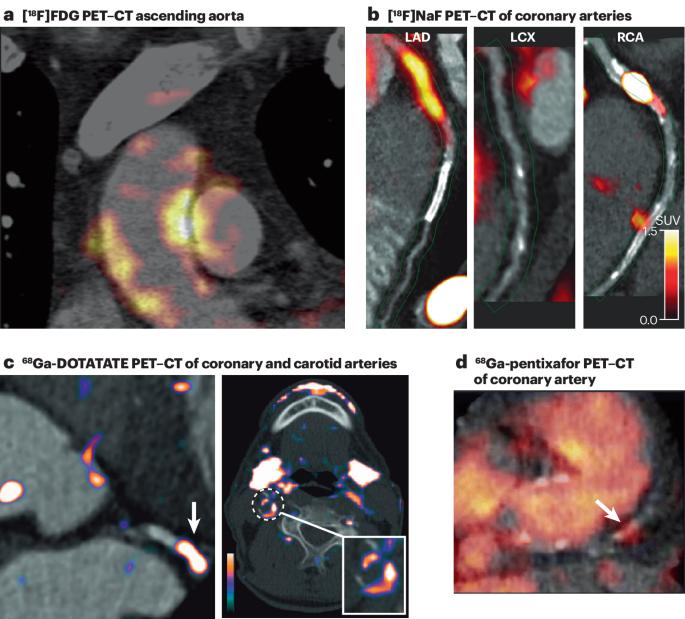Uncovering atherosclerotic cardiovascular disease by PET imaging
IF 41.7
1区 医学
Q1 CARDIAC & CARDIOVASCULAR SYSTEMS
引用次数: 0
Abstract
Assessing atherosclerosis severity is essential for precise patient stratification. Specifically, there is a need to identify patients with residual inflammation because these patients remain at high risk of cardiovascular events despite optimal management of cardiovascular risk factors. Molecular imaging techniques, such as PET, can have an essential role in this context. PET imaging can indicate tissue-based disease status, detect early molecular changes and provide whole-body information. Advances in molecular biology and bioinformatics continue to help to decipher the complex pathogenesis of atherosclerosis and inform the development of imaging tracers. Concomitant advances in tracer synthesis methods and PET imaging technology provide future possibilities for atherosclerosis imaging. In this Review, we summarize the latest developments in PET imaging techniques and technologies for assessment of atherosclerotic cardiovascular disease and discuss the relationship between imaging readouts and transcriptomics-based plaque phenotyping. In this Review, van Leent and colleagues provide an overview of current PET imaging approaches for assessment of atherosclerotic cardiovascular disease, as well as of whole-body PET applications; discuss the link between imaging readouts and atherosclerotic plaque pathology; and highlight promising developments in PET systems and radiotracer synthesis.

通过 PET 成像发现动脉粥样硬化性心血管疾病
评估动脉粥样硬化的严重程度对于对患者进行精确分层至关重要。具体来说,有必要识别残留炎症的患者,因为这些患者尽管对心血管风险因素进行了最佳管理,但仍有发生心血管事件的高风险。在这种情况下,PET 等分子成像技术可以发挥重要作用。PET 成像可以显示基于组织的疾病状态,检测早期分子变化,并提供全身信息。分子生物学和生物信息学的进步不断帮助人们破解动脉粥样硬化复杂的发病机制,并为成像示踪剂的开发提供信息。示踪剂合成方法和 PET 成像技术的同步发展为动脉粥样硬化成像提供了未来的可能性。在本综述中,我们总结了用于评估动脉粥样硬化性心血管疾病的 PET 成像技术的最新进展,并讨论了成像读数与基于转录组学的斑块表型之间的关系。
本文章由计算机程序翻译,如有差异,请以英文原文为准。
求助全文
约1分钟内获得全文
求助全文
来源期刊

Nature Reviews Cardiology
医学-心血管系统
CiteScore
53.10
自引率
0.60%
发文量
143
审稿时长
6-12 weeks
期刊介绍:
Nature Reviews Cardiology aims to be the go-to source for reviews and commentaries in the scientific and clinical communities it serves. Focused on providing authoritative and accessible articles enriched with clear figures and tables, the journal strives to offer unparalleled service to authors, referees, and readers, maximizing the usefulness and impact of each publication. It covers a broad range of content types, including Research Highlights, Comments, News & Views, Reviews, Consensus Statements, and Perspectives, catering to practising cardiologists and cardiovascular research scientists. Authored by renowned clinicians, academics, and researchers, the content targets readers in the biological and medical sciences, ensuring accessibility across various disciplines. In-depth Reviews offer up-to-date information, while Consensus Statements provide evidence-based recommendations. Perspectives and News & Views present topical discussions and opinions, and the Research Highlights section filters primary research from cardiovascular and general medical journals. As part of the Nature Reviews portfolio, Nature Reviews Cardiology maintains high standards and a wide reach.
 求助内容:
求助内容: 应助结果提醒方式:
应助结果提醒方式:


